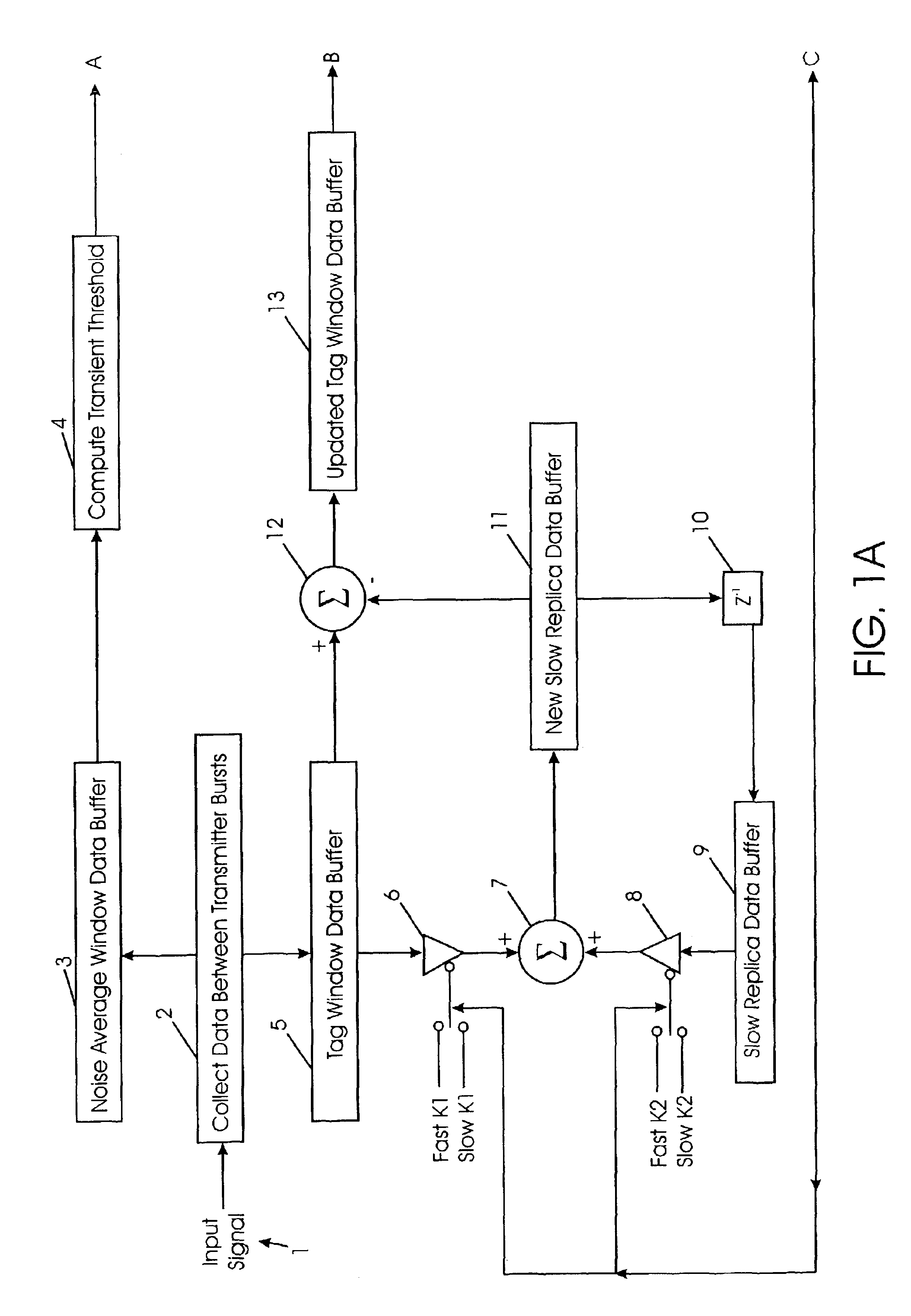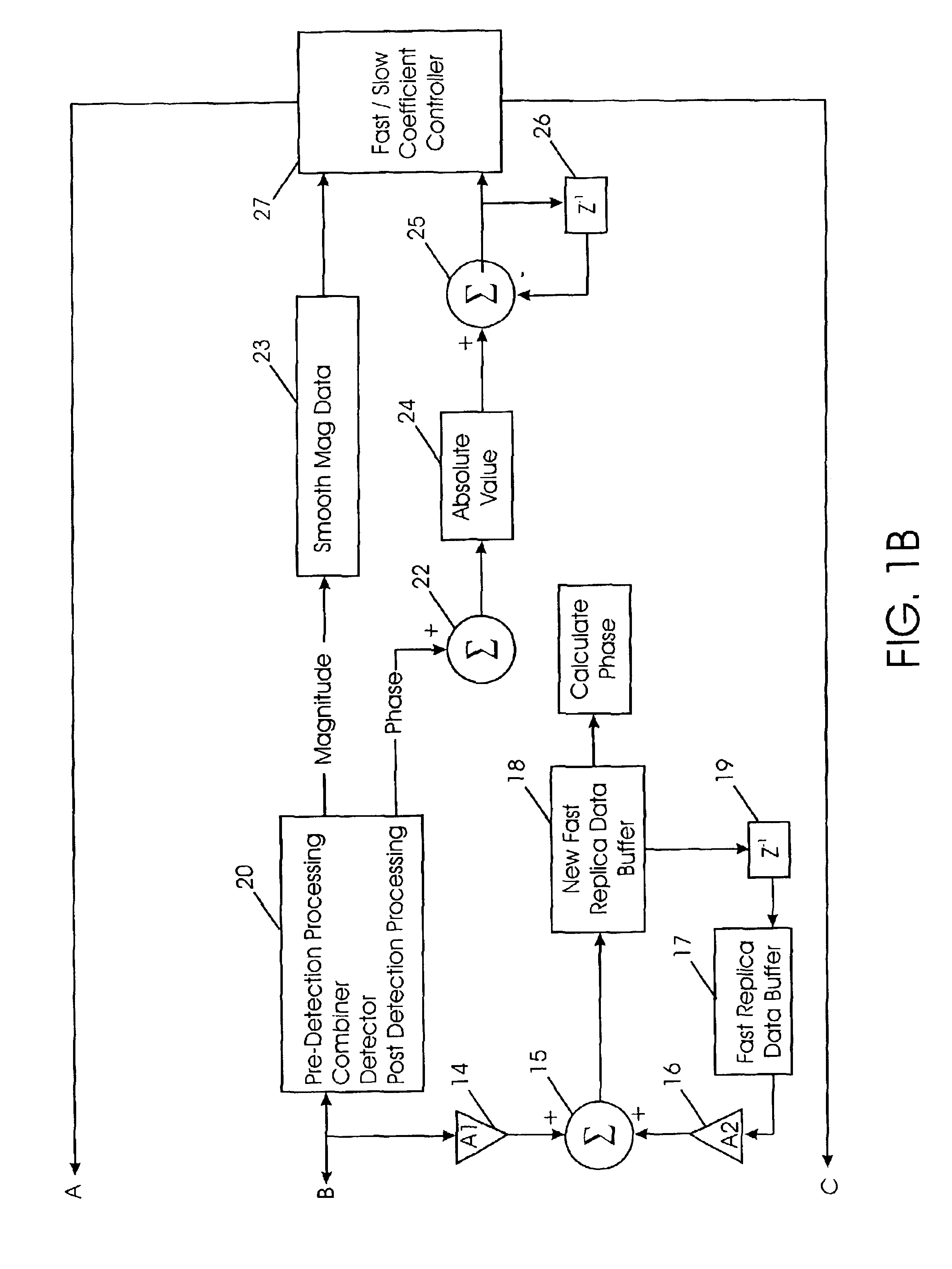Electronic article surveillance system stationary tag response canceller
- Summary
- Abstract
- Description
- Claims
- Application Information
AI Technical Summary
Benefits of technology
Problems solved by technology
Method used
Image
Examples
Embodiment Construction
[0014]The present system monitors the tag window, which is a processing period that occurs after the transmit burst, and the noise average window, which is a processing period occurs before the next transmitter burst. The system processor attempts to learn which signals in the tag window are undesirable and remove the undesirable signals from the receive signal before detection. To accomplish this, the processor retains two replica signals; a fast replica and a slow replica. In normal operation, the slow replica gradually adapts and obtains the characteristics of the portion of the receive signal that is nearly constant and subtracts it from the receive signal. Slow environmental changes are therefore tracked. A moving tag, which is characterized by rapidly changing phase and magnitude, is not captured by the slow replica and therefore is not subtracted from the receive signal. The slow replica also has the provision to update quickly on command of the processor.
[0015]The fast repli...
PUM
 Login to View More
Login to View More Abstract
Description
Claims
Application Information
 Login to View More
Login to View More - R&D
- Intellectual Property
- Life Sciences
- Materials
- Tech Scout
- Unparalleled Data Quality
- Higher Quality Content
- 60% Fewer Hallucinations
Browse by: Latest US Patents, China's latest patents, Technical Efficacy Thesaurus, Application Domain, Technology Topic, Popular Technical Reports.
© 2025 PatSnap. All rights reserved.Legal|Privacy policy|Modern Slavery Act Transparency Statement|Sitemap|About US| Contact US: help@patsnap.com



